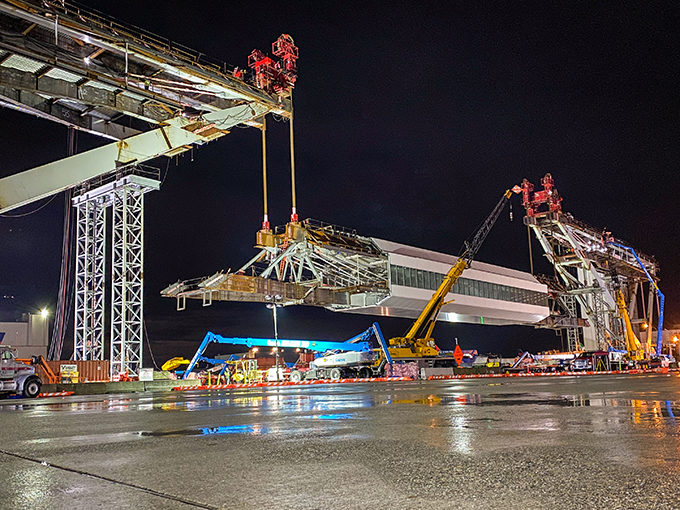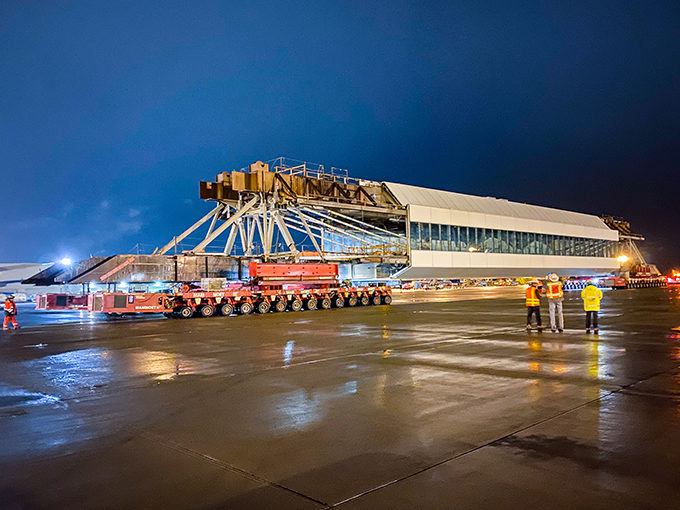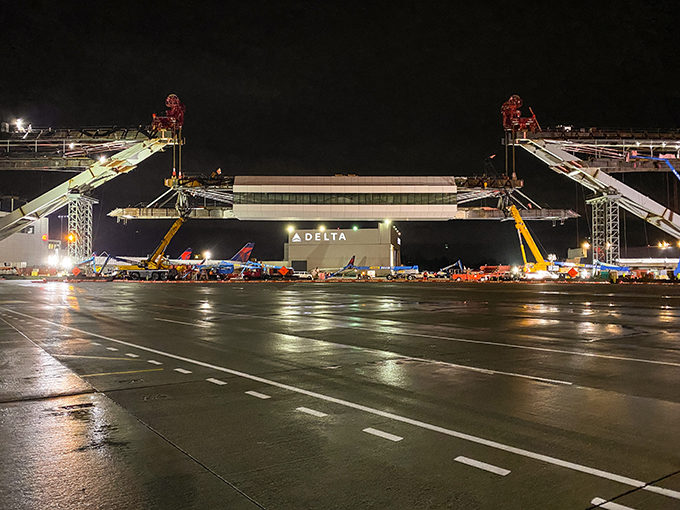


A major milestone was reached last week at Seattle-Tacoma (Sea-Tac) Airport’s new International Arrivals Facility (IAF). The long-awaited center span of a massive aerial walkway was moved down the airport’s center runway and lifted into place, setting the record for the longest structure over an active taxi lane in the world, coming in at 780 feet long.
The 320-foot center span, which weighs 1,500 tons, was carried by four self-propelled modular transporters in the dark of night, traveling at walking-speed from Cargo 2 to its final destination between the airport’s existing South Satellite and the new IAF. Once aligned with the bridge’s V-piers, four strand jacks lifted the center span into place at a rate of 20 feet per hour.
The aerial walkway’s clear span—the unobstructed distance between two supports—measures 610 feet. The colossal width of the clear span, coupled with an 85-foot vertical clearance, allows for an aircraft’s wingspan and tail fin to safely pass underneath.
The structure was built offsite in multiple prefabricated pieces. Overall, there are 17 major components crafted by seven steel fabricators, all located within a three-hour radius of the project site. Altogether, the structural steel used in the entire walkway adds up to 3,000 tons.
Video © Clark Construction
The IAF, designed for the Port of Seattle, is the most complex capital development project in Sea-Tac’s history. It is designed to make the arrivals process more efficient, providing direct passage for international travelers arriving at the South Satellite to the new customs processing facility. Once fully operational, the building will welcome approximately 2,600 travelers per hour into a spacious, daylit terminal that offers views of the Pacific Northwest and Mount Rainier.
The IAF project team includes SOM; Clark Construction Group; The Miller Hull Partnership; Patano Studio Architecture; Guy F. Atkinson Construction, LLC; KPFF Consulting Engineers; Madsen, Kneppers & Associates, Inc.; the Seattle office of Arup; European bridge design specialists Schlaich Bergermann und Partner; and Mammoet. Construction began in September 2016 and the project is expected to be complete in late 2020.
Video © SOM